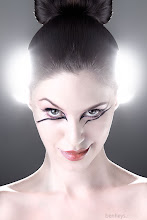very annoying. came to class today prepared to upload all the stuff I have done over the passed couple of weeks which I had put into one folder called something like 'to hand in' but the folder isn't on my memory stick so OBVIOUSLY I have forgotten to put in on my stick which I thought I had done the other day. So with none of my stuff here with me in class, I really don't know what to do. Either way I will have to come back on friday to upload the stuff.
notes to self:
live-wirez.gu.edu.au
!!!!
Funkhouser sent me a pdf file which is a promotional thingy for his new book of poetry called, "Prehistoric Digital Poetry - An Archeology of Form". it seems to be part of a specific series called "Modern and Contemporary Poetics", edited by Charles bernstein and Hank Klazer. Although I haven't got a copy to read, there is a picture on the leaflet thing of the book's front cover. The front cover looks like a picture of some kind of digital animation, using symbols that seem to be in a different language as underneath them it states "anapest, to strike" and "trochee, to run" however what is interesting to me is that these symbols also look to me like the lines of the Iambic Pentameter. Perhaps it is and it is being used as a way to sound out the words. In this way this picture encorperates digital animation with historical ideas of poetry (iambic pentameter) and also one of Funkhousers favourites, sound, in the way that he is possibly reffering to how the words should be
sounded out. The picture also includes some kind of digital landscape which is reminiscent to me of something we could make in google sketchup.
Obviously Funkhouser has taken all this into consideration in the presentation of his book which describes itself as "A singular and major historical view of the birth of electronic poetry." therefore jamming the words 'historical' and 'electronic' together, creating somewhat of a... whatever the word is... where things are opposite and contradictory. I don't mean that these are totally opposites I just mean that in ones cognitive process one may find an interesting destinction here. I really don't know how to explain what I am trying to say. I blame that constant 'beep beep' of the door that is always happening in this class. Anyway it's great that someone has compiled a history like this, it's probably not the first time but who knows.
This is what the blurb on the promotional pdf says about the book (as I don't feel like retyping it in my own words, which would be the studious thing to do I'm sure)
"For the last five decades, poets have had a vibrant relationship with computers and
digital technology. This book is a documentary study and analytic history of digital
poetry that highlights its major practitioners and the ways that they have used technology
to foster a new aesthetic. Focusing primarily on programs and experiments
produced before the emergence of the World Wide Web in the mid-1990s, C. T.
Funkhouser analyzes numerous landmark works of digital poetry to illustrate that the
foundations of today’s most advanced works are rooted in the rudimentary generative,
visual, and interlinked productions of the genre’s prehistoric period.
Since 1959, computers have been used to produce several types of poetic output,
including randomly generated writings, graphical works (static, animated, and video
formats), and hypertext and hypermedia. Funkhouser demonstrates how hardware,
programming, and software have been used to compose a range of new digital poetic
forms. Several dozen historical examples, drawn from all of the predominant
approaches to digital poetry, are discussed, highlighting the transformational and
multi-faceted aspects of poetic composition now available to authors. This account
includes many works, in English and other languages, which have never before been
presented in an English-language publication.
In exploring pioneering works of digital poetry, Funkhouser demonstrates how technological
constraints that would seemingly limit the aesthetics of poetry have instead
extended and enriched poetic discourse. As a history of early digital poetry and a
record of an era that has passed, this study aspires both to influence poets working
today and to highlight what the future of digital poetry may hold.
“Funkhouser provides a detailed inventory of key works that led the way to the current
flowering of digital poetry. This is the first work to provide historical, descriptive, and
technical accounts of the inaugural works of computer-assisted poetry composition.
Funkhouser’s command of the history, the aesthetics, and the technology is as rare as
it is welcome.”
—Charles Bernstein, author of Girly Man and A Poetics
C. T. Funkhouser is Associate Professor of Humanities at the New Jersey Institute
of Technology and author of Technopoetry Rising: Essays and Works (forthcoming) and
Selections 2.0, an eBook."
That ebook mentioned at the bottom is possibly the one he is going to send to me :D I imagine, unless he creates heaps of them...
I'm not sure if I've mentioned it before, I possibly have because I seem to blog a lot for this thing (this is my 23rd post) but the other week in class I did some work on the swishmax project. I played around with the word 'shoulder' but I didn't like any of the outcomes. They looked alright as they were but I knew that putting it into the kind of interface that I usually make in Flash wouldn't work as it'd just look too different and out of place. Can you imagine the word 'shouder' jumping around happily on one of my pages?? (not that you've seen them yet as I didn't have them on my stick to hand in today grrr.)
